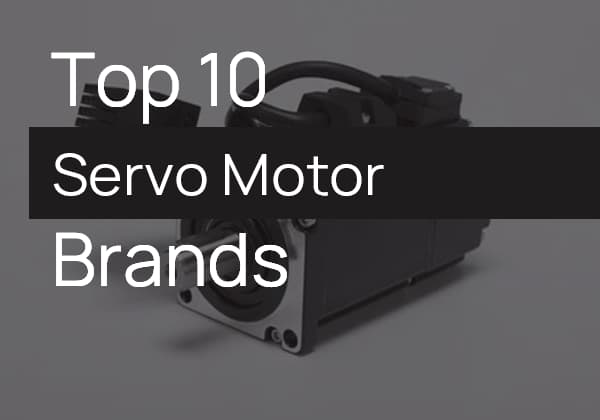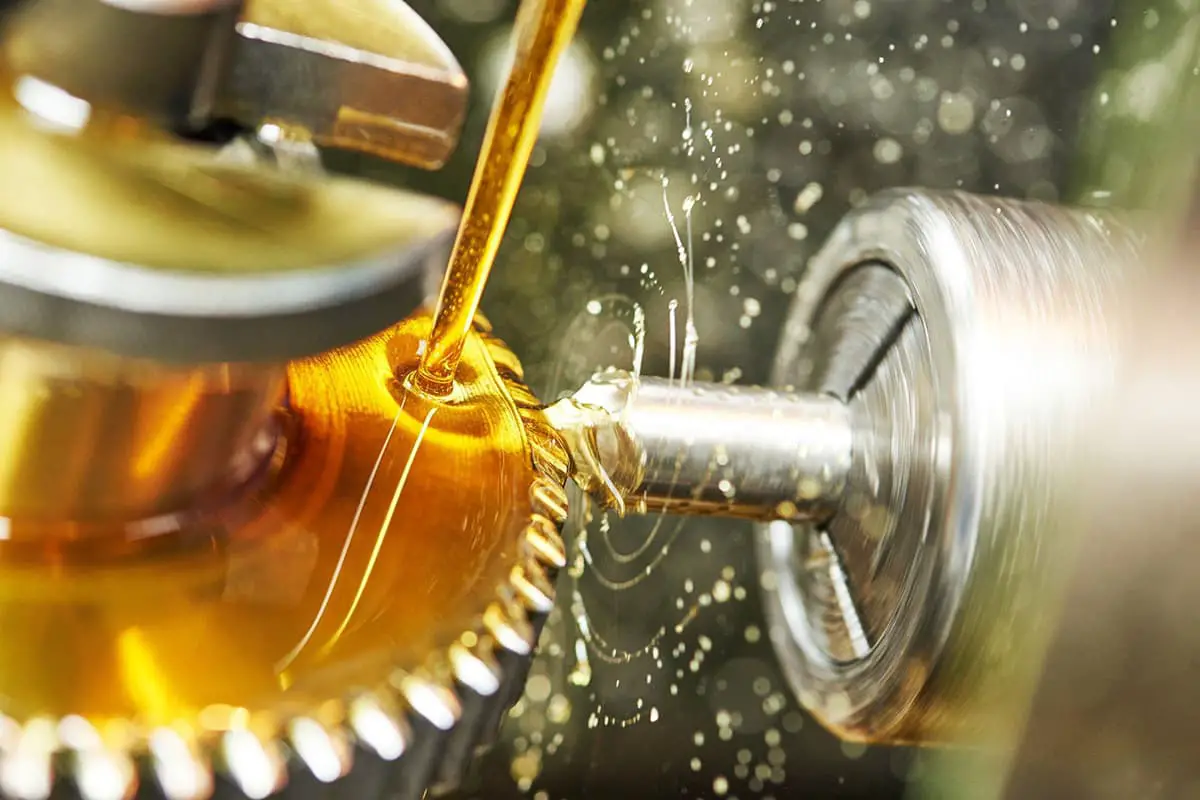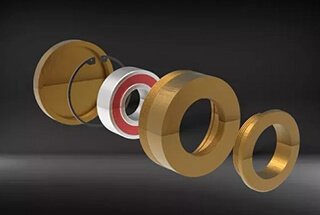
Have you ever wondered why ball screws, crucial in machine tools, often fail? This article delves into the importance of proper maintenance to prevent such failures. It explains how wear and preload affect ball screw performance and offers predictive maintenance strategies using advanced sensor technologies. By the end, you’ll understand how to extend the life of ball screws and ensure the precision of your machine tools.
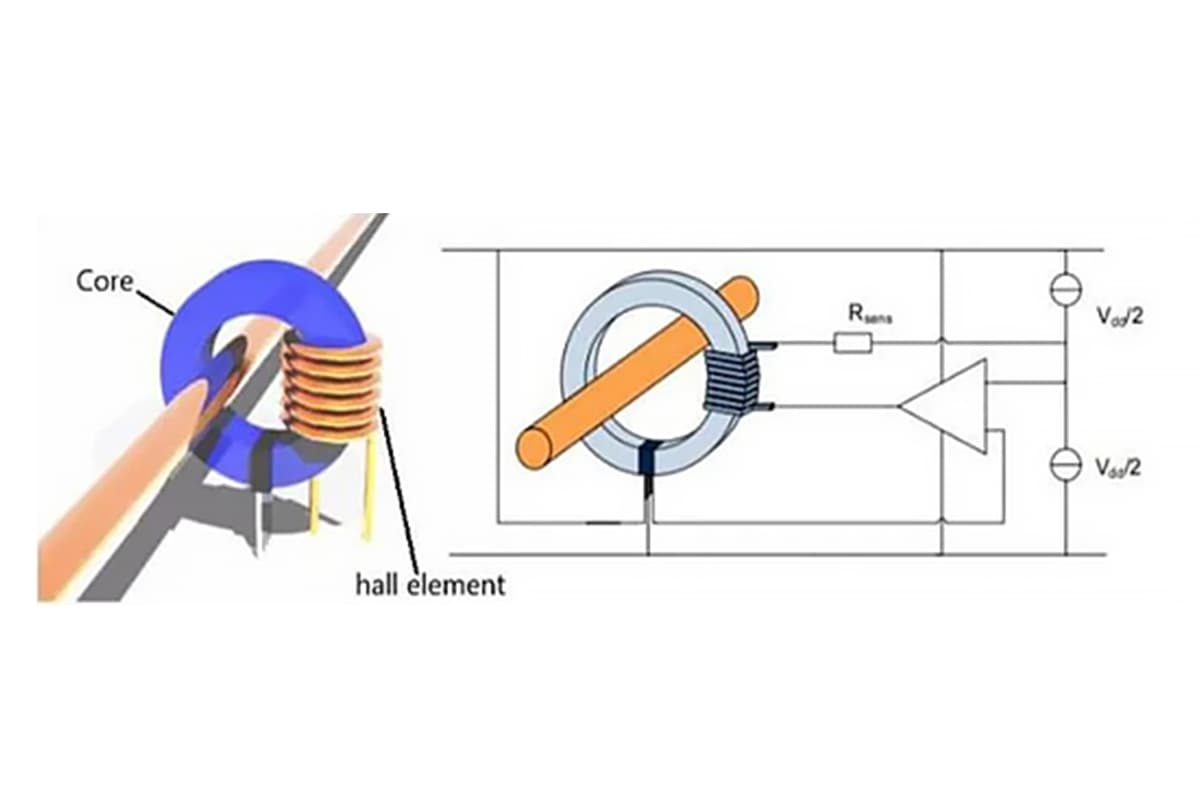
Ball screws play a crucial role in the feed system of machine tools. As the manufacturing industry evolves, the market demands increasingly stringent product quality, leading to higher precision requirements for machine tools from enterprises.
Consequently, the reliability and performance of ball screws have become essential standards. In the feed system, wear on the ball screw can lead to a decrease in preload, which is a common issue.
Proper preload can prevent axial impacts and excessive heat, improving the accuracy and service life of the ball screw. This article will briefly analyze the problems associated with ball screws and discuss viable predictive maintenance strategies to mitigate wear.
A ball screw is a linear actuator that converts rotary motion into linear motion, widely used in the feed systems of machine tools. Its main advantage is precise positioning at high speeds, with high mechanical efficiency.
Due to its low friction, its transmission efficiency can reach up to 90%, which also extends the service life of the ball screw and reduces maintenance downtime. The friction and linear impacts between the ball screw and nut make a precise feed system challenging to achieve.
Typically, the right amount of preload is applied to eliminate linear impacts and increase the stiffness of the ball screw. However, excessive preload can increase friction. Preload also plays a significant role in the stiffness of the ball screw, noise, and positional accuracy.
When a machine starts or stops, the acceleration or deceleration of the ball screw can lead to a loss of lubricating oil on the contact surfaces. This loss can worsen heat dissipation and accelerate wear on the ball screw. As wear deepens, preload decreases, marking a primary concern for ball screws.
Friction-induced wear on ball screws involves analyzing surface wear. The roughness of the ball surface is smoother than that of the track, so their relative movement can be likened to the interaction between a smooth and a rough surface.
If a harder and rough surface repeatedly plows in the same direction across a softer surface, unidirectional plastic deformation accumulates with each cycle. This “ratchet failure” or “progressive collapse” process suggests that wear occurs through a ductile fracture mechanism, producing very fine plate-like debris, as shown in Figure 1.
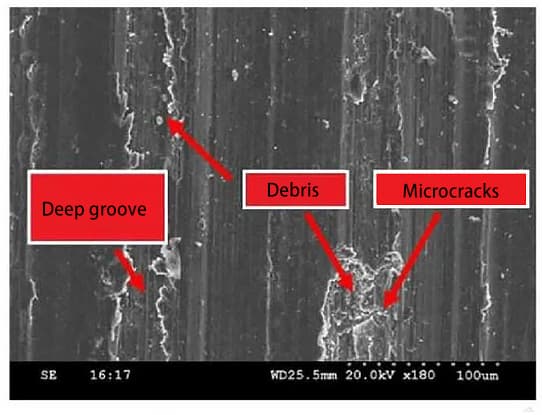
Dynamic testing of ball screws shows that torque initially increases to a high value before beginning to decrease. This is because the lubrication film protecting the contact surfaces needs time to form, increasing friction between the ball and track and requiring more torque to drive the ball screw system’s shaft. As shown in Table 1, with higher speeds requiring more acceleration time, torque increases with speed.
Table 1 Acceleration as a function of rotational speed
| Rotation speed(rad/s) | 31.4 | 62.8 | 94.2 | 125.6 | 219.9 | 314.2 |
| Acceleration time (s) | 0.036 | 0.055 | 0.076 | 0.099 | 0.16 | 0.215 |
| Acceleration (m/s) ²) | 2.78 | 3.63 | 3.95 | 4.04 | 3.75 | 4.65 |
In deceleration, the behavior differs from acceleration but also requires higher torque for deceleration. When the speed stabilizes, torque gradually increases with speed. The difference in torque is relative to similar stable speeds at instantaneous steps, showing that the lubrication regimes during acceleration, deceleration, and steady speed are distinct.
Thus, the contact surfaces endure significant loads and low relative speeds, leading to critical lubrication issues during acceleration and deceleration.
Predictive maintenance involves using sensors to monitor the operational status of equipment, combining sensor data with lifecycle parameters to determine maintenance timing. This maximizes maintenance intervals and reduces downtime costs.
Predictive maintenance can reduce unexpected mechanical failures and prevent issues from worsening. Early detection and repair of mechanical problems can mitigate most issues, thus enhancing product quality and the efficiency of plants and production lines.
Detection methods can be direct or indirect. Direct methods involve directly measuring the operational accuracy and positional status of the component. Indirect methods collect signals and information related to the component to infer its status.
This article focuses on direct methods, where selecting the detection signal is crucial. Detection signals include acoustic emission signals, laser detection, electrical signal detection, vibration signal detection, and internal machine tool signals.
For ball screw maintenance based on electric motor current, time-domain analysis methods are typically used. Wavelet theory represents a new time-domain analysis method.
Electric signals contain many error messages and a significant amount of noise. Wavelet signals can effectively separate signals across different times and frequency bands, eliminating noise signals and reconstructing a clearer signal image.
The collection of current signals uses Hall current sensors, based on the magnetic balance Hall principle and closed-loop principle, as shown in Figure 2.
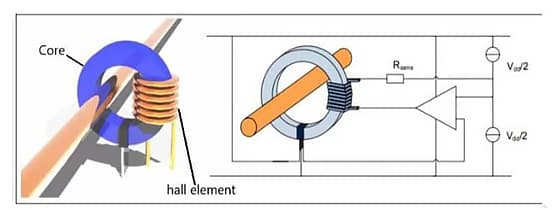
The current at the input generates a magnetic field that passes through a high-quality magnetic core, forming a magnetic flux loop. The Hall element is fixed in a small air gap. A coil wound around the magnetic core outputs a compensatory current in the opposite direction.
This compensatory current offsets the magnetic flux generated by the input current, maintaining zero magnetic flux in the loop. After special circuit processing, the output potential of the Hall element accurately reflects changes in the current.
Thus, Hall current sensors can monitor changes in the current of the ball screw’s driving motor. Processing the collected data can accurately determine the operational status of the ball screw.


